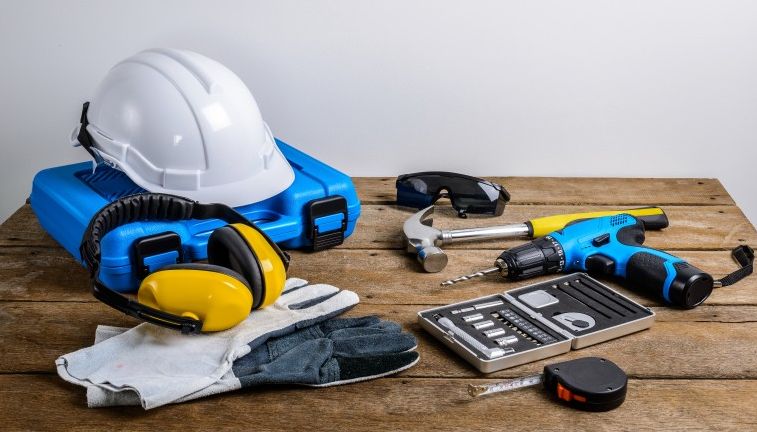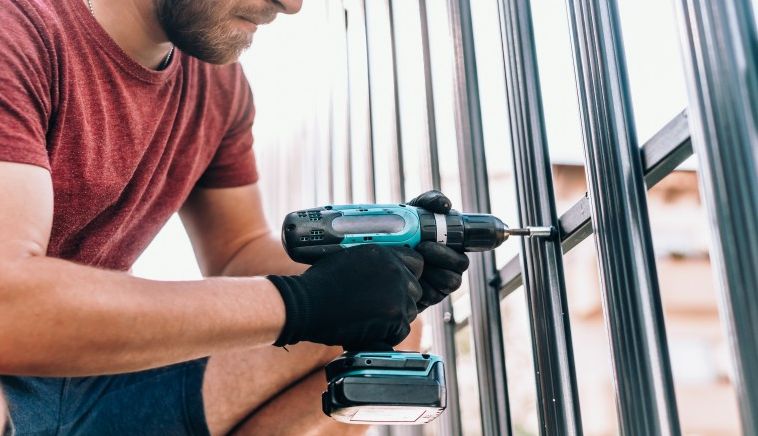After cleaning, sanding, assembling, and painting, the operator will not only get a brand new piece of furniture, but may also open the traffic password on social media.
In recent years, such home/yard renovation and DIY-themed videos have become popular on overseas social media. The trending topics #homeproject and #gardening on TikTok reached 7.2 billion and 11 billion views respectively. Benefiting from this upsurge in home improvement, the category of DIY tools has grown strongly on major e-commerce platforms, unlocking huge business opportunities.
DIY culture is popular, giving birth to hundreds of billions of gold track
In European and American countries, the ownership rate of single-family houses and private courtyards is high. During the epidemic, people spend more time at home. Renovating the home environment and arranging gardens have gradually become a home pastime for many families. In addition, due to factors such as overseas inflation and high labor costs, Europeans and Americans usually adhere to the principle of “try not to find workers if you can do it yourself” when it comes to home renovation and house repairs. growth of.
According to the survey, the global DIY home improvement retail market is worth US$848.2 billion in 2021, and is expected to reach US$1,278 billion by 2030, with a compound annual growth rate of 4.37% from 2022 to 2030. [1] Look at the growth of electric tools categories on major e-commerce platforms in recent years:
1. FinancesOnline, a foreign authoritative organization,announced the fastest-growing Amazon categories in 2022, including tools and DIY home improvement categories, as well as patio, lawn and garden categories ranking in the top six.
2. In 2022, the global penetration rate of AliExpress tools and lamps will increase by 3% year-on-year, maintaining a positive growth, of which Europe accounts for 42%, Russia accounts for 20%, the United States 8%, Brazil 7%, Japan and South Korea 5%.
3. On ManoMano, Europe’s leading e-commerce platform for home furnishing, gardening and DIY, the tools category maintained an annual growth rate of 15%.
In fact, the tool industry as a whole is characterized by stability, and even during the financial crisis, the market has maintained a certain degree of resilience. In the post-epidemic era, the remote office model has been further integrated into the lives of European and American people, and people’s pursuit of improving their family environment and quality of life continues unabated. These signs indicate that there is still a lot of room for growth in DIY tool products.
China’s electric tool industry under the tuyere
Returning to the supply chain, the current power tool industry chain in China is complete, and various aggregation advantages have been formed in the upper, middle and lower reaches of the industry. According to statistics from the Electric Tool Branch of China Electrical Equipment Industry Association, more than 85% of the electric tools used in the world are produced in China, and China’s electric tool exports account for about 40% of the world’s total export of electric tools.
Lusigang Town, Qidong City, Nantong City, Jiangsu Province is the “Hometown of Power Tools” in China. In the past, Qidong’s power tool companies mostly focused on the domestic market, or participated in the international industrial division of labor through OEM and OEM. The annual production and sales of electric tools here exceed 50 billion yuan, accounting for more than 60% of the country’s total sales [4].
However, in recent years, Qidong’s electric tool industry is focusing on accelerating transformation and upgrading through strategies such as technological innovation, outward drive, scale development, and brand management. A group of large-scale and powerful electric tool companies have completed the transformation of their own brands. At the same time, it has changed from fighting alone to group development, and actively participated in the national “dual cycle” strategy to accelerate the pace of “going out”.
When Hugo cross-border visited the Qidong electric tool industry belt last year, it was learned that Jiangsu Dongcheng Electric Tool Co., Ltd., a local leading enterprise and also a leading brand in China’s electric industry, began to accelerate the internationalization process of its own brand since 2013. , in South Asia, Southeast Asia, the Middle East, Africa, and Latin American markets, and set up a European and American marketing team in Shanghai in 2021, hoping to use cross-border e-commerce and other new foreign trade formats to cut in, through online + offline Omni-channel layout, Strive to make breakthroughs in overseas European and American markets.
Not only are leading enterprises speeding up their entry, but also many local factories are embracing this new form of foreign trade during the golden period of cross-border e-commerce booming to seize a new wave of development.
A person in charge of a factory said: “We are making lithium battery charging tool kits. We have been OEM for foreign big brands for so many years, and we have enough confidence in the performance and safety of the products. Compared with other overseas manufacturers, Qidong’s power tools have a great price advantage. Obviously. Now the company continues to invest in research and development, and the products have passed GS, CE, ROHS and other tests and certifications, and our cross-border business has continued to grow in the past two years.”
In the view of the person in charge, a solid industrial foundation is one of the core competitiveness of Qidong electric tools to ride the wind and waves overseas. At the same time, he also deeply felt the increasingly strong cross-border e-commerce atmosphere in Nantong in recent years. ”Nantong has introduced many policies that are favorable to cross-border e-commerce. There are also more services, training, and large-scale exhibitions related to cross-border e-commerce,” he said.
It is understood that in recent years, Nantong is continuing to promote the “industrial belt + cross-border e-commerce” model, and through measures such as policy support, cross-border e-commerce basic talent training, and opening up cross-border e-commerce full value chain comprehensive services, it has attracted traditional foreign trade companies to engage in Cross-border e-commerce, while focusing on brand building, promotes the upgrading and transformation of Nantong’s characteristic industrial belt. With the joint support of the government, enterprises, and social forces, Nantong has deeply cultivated the fertile soil for the development of cross-border e-commerce and continuously released its development potential.
Post time: Apr-24-2023






